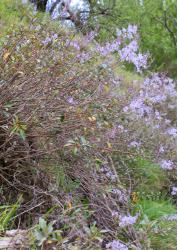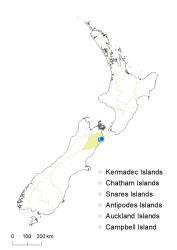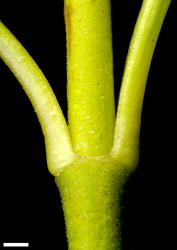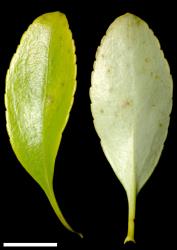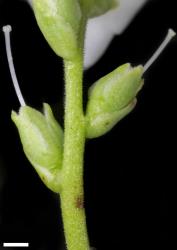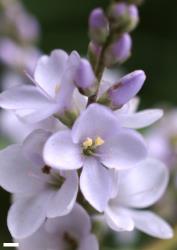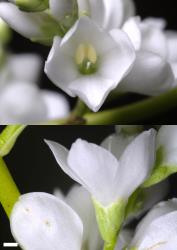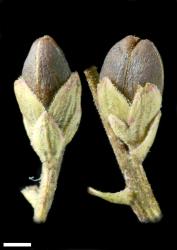- Taxon
- Gallery
- ≡ Heliohebe hulkeana subsp. evestita Garn.-Jones, New Zealand J. Bot. 31: 331 (1993)
Young stems glabrous or rarely sparsely glandular- and eglandular-puberulent, old stems glabrous. Leaf lamina lanceolate, rhomboid, or rarely elliptic; apex acute to apiculate, or rarely obtuse. Distal branches of inflorescence glandular-puberulent or sparsely puberulent. Pedicels glabrous or glandular-puberulent, 0–1 mm long. Calyx 2–3 mm long; lobes lanceolate, ovate, or deltoid, acuminate or acute, glandular-ciliolate or with mixed glandular and eglandular cilia. Corolla lobes glabrous.
Distinguished from subsp. hulkeana by sparsely puberulent or glabrous young stems and lower branches of the inflorescence. When hairs are present on inflorescence rachises they are sparse and often glandular, similarly at the base of the calyx. Calyx lobes are ovate to lanceolate to deltoid, acute to acuminate, with sparser marginal cilia that include some glandular hairs. The leaves tend to be more ovate or lanceolate, and the inflorescence is graceful, with flowers more distantly spaced than in subsp. hulkeana.
South Island: Marlborough (between Dunsandel Creek in the Waimā Valley and Boundary Stream near Kekerengu; inland at Whernside and Mt Ben More).
River and stream gorges, cliffs and rock outcrops, mostly on limestone. Recorded elevations range from 20 to 792 m.
Flowers: October–November; fruits: January–March.
Chromosome number unknown.
V. hulkeana cv. Lena, with white flowers and yellow-green leaves, appears to belong to subsp. evestita.



